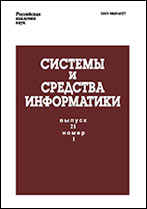|
Average probability of error in calculating wavelet–vaguelette coefficients while inverting the Radon transform
A. A. Kudryavtseva, O. V. Shestakovab
a Department of Mathematical Statistics, Faculty of Computational Mathematics and Cybernetics, M. V. Lomonosov Moscow State University, 1-52 Leninskie Gory, GSP-1, Moscow 119991, Russian Federation
b Institute of Informatics Problems, Federal Research Center "Computer Science and Control" of the Russian Academy of Sciences, 44-2 Vavilov Str., Moscow 119333, Russian Federation
Abstract:
Image reconstruction methods based on decomposition of the image function in a special wavelet basis and subsequent thresholding of the decomposition coefficients are used to solve computational tomography problems. Their attractiveness lies in adaptation to spatial inhomogeneities of images and the possibility of reconstructing local areas of the image from incomplete projection data that is of key importance, for example, for medical applications where it is undesirable to expose a patient to an unnecessary dose of radiation. The analysis of errors of these methods is an important practical task, since it allows one to assess the quality of both the methods themselves and the equipment used. The paper considers the wavelet–vaguelette decomposition method for reconstructing tomographic images in a model with an additive Gaussian noise. The order of the loss function based on the average probability of error in calculating wavelet coefficients is estimated.
Keywords:
Radon transform, wavelet–vaguelette decomposition, thresholding, loss function.
Received: 18.08.2020
Citation:
A. A. Kudryavtsev, O. V. Shestakov, “Average probability of error in calculating wavelet–vaguelette coefficients while inverting the Radon transform”, Sistemy i Sredstva Inform., 30:4 (2020), 14–24
Linking options:
https://www.mathnet.ru/eng/ssi731 https://www.mathnet.ru/eng/ssi/v30/i4/p14
|

| Statistics & downloads: |
| Abstract page: | 116 | | Full-text PDF : | 24 | | References: | 18 |
|




 Contact us:
Contact us: Terms of Use
Terms of Use
 Registration to the website
Registration to the website Logotypes
Logotypes








 Citation in format
Citation in format 